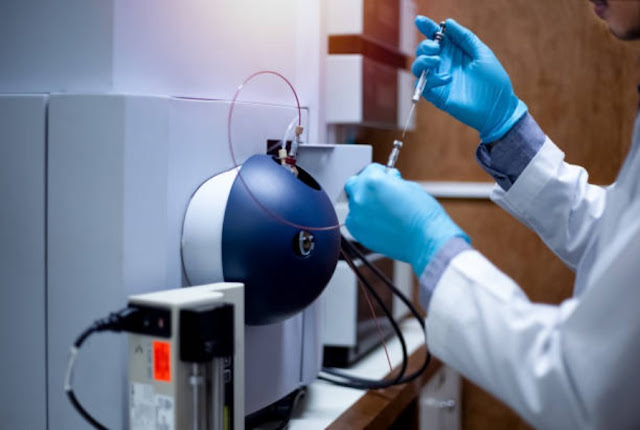Tech Revolutionizing Cancer Research and Care

What once appeared not possible in most cancers research is
now a truth way to a number of technological improvements that have brought
about breakthroughs inside the approaches we discover, visualize, understand,
and treat cancer. Continuing to discover and use these technologies can open
the door to accelerate progress in opposition to this sickness.
CRISPR
Revolutionizing gene modifying
Researchers never imagined being capable of speedy and
easily exchange the genetic code of residing cells. But now that’s feasible
with CRISPR, which fits like a couple of scissors that could exactly delete,
insert, or edit specific bits of DNA inside cells. The discovery of this modern
gene-enhancing device emerged from a facet venture fueled by means of curiosity
approximately how bacteria fight viruses. After making key discoveries
approximately CRISPR, Drs. Jennifer Doudna and Emmanuelle Charpentier gained a
Nobel Prize in 2020. A yr earlier, the first US medical trial of a CRISPR-made
most cancers immunotherapy started, and more studies are exploring CRISPR-made
most cancers treatments. Additionally, trials are starting to test the use of
CRISPR directly within the body. While it's miles a game-changer, CRISPR
nevertheless has its barriers and debate maintains across the ethics of gene
editing. But one thing is apparent—CRISPR is a effective tool that would help
make sizeable development, in cancer research and past.
Artificial Intelligence
Computer programming used to improve most cancers prognosis, drug development, and precision medicine
What if a laptop simulation should create a virtual version
of you, a “virtual dual” that physicians may want to use to “discover” remedies
and expect feasible consequences before offering you with personalized care
alternatives? It’s not technology fiction, thanks to advances in synthetic
intelligence (AI). AI includes programming a laptop to behave, purpose, and
research. It’s superb at finding styles in big quantities of facts, that's
specially beneficial in scientific research. NCI, the Department of Energy, the
Frederick National Laboratory for Cancer Research, and a transdisciplinary
group of investigators are the use of AI to advance improvement of digital
twins for human beings with cancer. Others use it to analyze imaging facts and
digital health facts to tailor sufferers’ radiation doses. AI is even being
harnessed to quickly examine population-primarily based cancer statistics and
estimate the probability of positive cancers. And these examples just scratch
the surface—AI has the potential to simply rework most cancers care.
Telehealth
Bringing cancer care, treatment, and scientific trials to the affected person
Providing cancer care and walking scientific trials are
requirements, even in the course of a deadly disease. Many fitness care
companies participating inside the NCI Community Oncology Research Program
(NCORP) efficaciously included or expanded telehealth practices to offer
patients’ cancer treatment and care remotely. These hospitals and clinics are
maximizing safety and comfort for both patients and companies across the usa
through the usage of telehealth for far flung fitness tracking, video visits,
or even in-domestic chemotherapy. Telehealth also makes get admission to to
medical trials and most cancers care easier for more various agencies of
patients throughout wider geographical areas. Outside of most cancers care, you
would possibly’ve taken advantage of telehealth practices and contributed to
the almost one-0.33 of health visits performed surely closing yr. Despite its
developing popularity, not all care may be accomplished remotely. Ensuring that
faraway health care era is used equitably comes with demanding situations, but
researchers are working to deal with them.
Clinical trial participants like Marilyn have had high
quality stories the usage of telehealth. Read her story.
Cryo-EM
Generating high-resolution photos of the way molecules behave to assist inform most cancers treatment
You would possibly suppose the modern day iPhone has an
extraordinary camera, but perhaps you haven’t heard about cryo-electron
microscopy (cryo-EM). Cryo-EM captures pictures of molecules which can be
ten-thousandths the width of a human hair, at resolutions so excessive they
were unparalleled just a decade in the past. Like sorting via a couple of
candid photographs before posting the “appropriate” ones on social media,
researchers examine hundreds of heaps of cryo-EM images for satisfactory,
reconstructing three-D pictures of molecules that allow scientists to study how
they behave. For cancer, this indicates higher understanding how cancer cells
live on, grow, and engage with remedies and different cells. Just currently at
the Frederick National Laboratory for Cancer Research, cryo-EM confirmed how a
drug for chronic myeloid leukemia interacts with ribosomes (a molecular device
inner cells) and in the procedure evolved the most distinctive view of a human
ribosome up to now—an achievement that might tell the creation of remedies
for most cancers and other illnesses.
Visit the National Cryo-Electron Microscopy Facility's page
to learn how NCI is increasing get admission to to this technology.
Infinium Assay
Providing essential insights into how genetic versions relate to cancer
What can genotyping, a generation that reads and compares genes across humans, inform us approximately most cancers? Used through businesses like 23andMe and Ancestry, the Infinium Assay, evolved by way of Illumina, is a manner and set of gear that analyzes millions of unmarried nucleotide polymorphisms, or SNPs, the maximum common type of genetic variation. SNPs can help map genes that motive cancer and provide perception into cancer threat, development, and improvement. Initially met with skepticism about whether or not this era became technically feasible, the assay become created with assist from NCI’s Small Business Innovation Research program and is a compelling example of taxpayer-funded innovation. The assay is now used in a extensive variety of packages—from ancestry reviews and most cancers studies, to NIH’s All of Us Research Program, or even to reading a plant’s genome to peer what influences insect and drought resistance.


